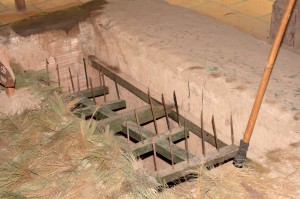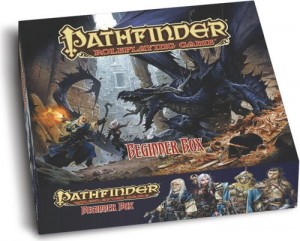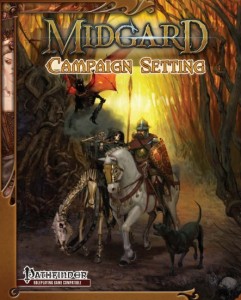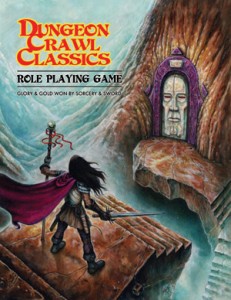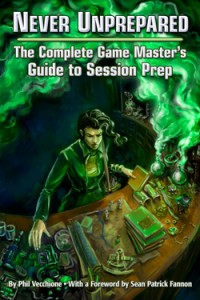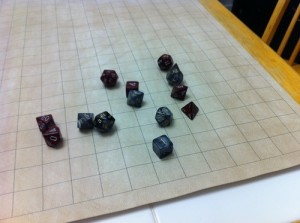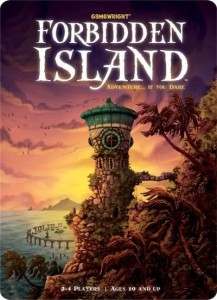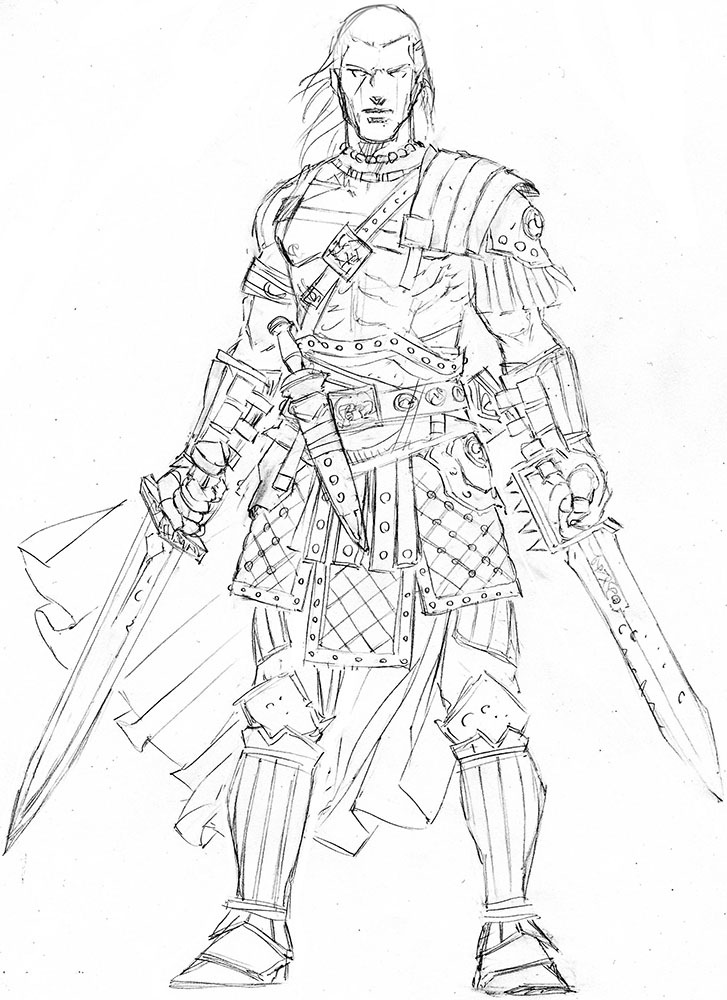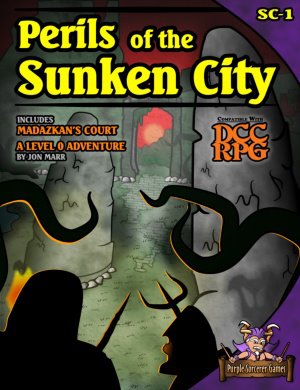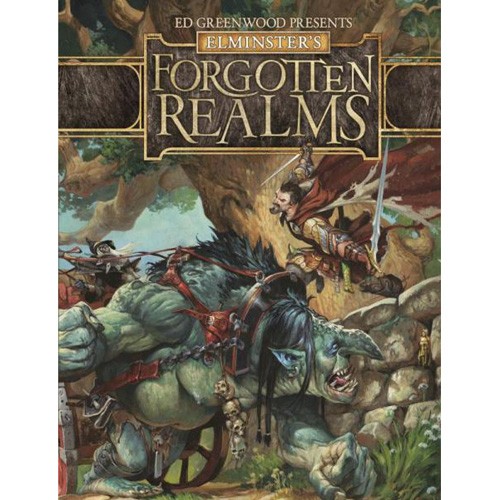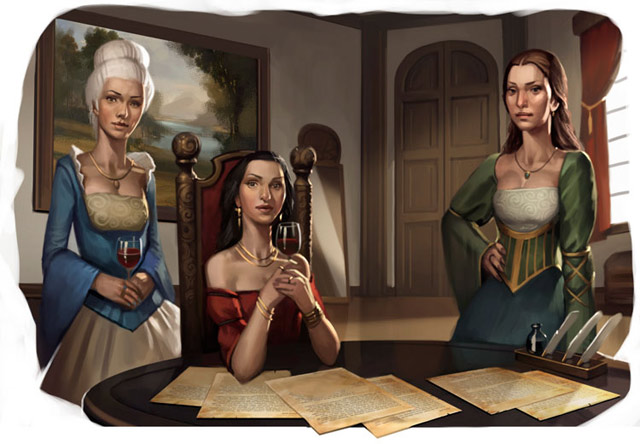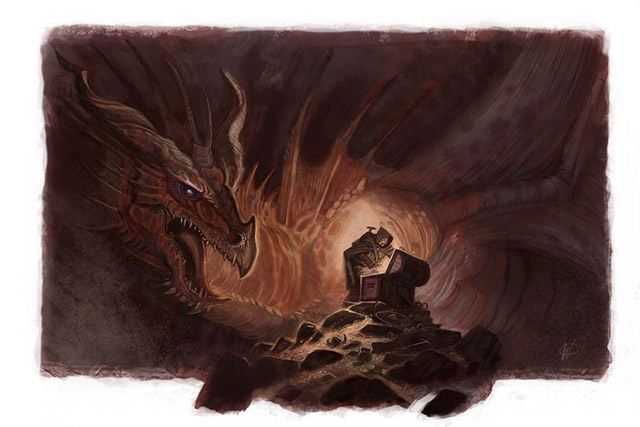The post below is written by UbiquitousRat, a guest blogger for The Iron Tavern.
 We’ve had two sessions playtesting the new Rolemaster so far. Each session has, quite deliberately, focused on the combat system. That’s not to say that the adventure is merely a vehicle for testing rules, because it isn’t… but that we’ve given the combat rules a pretty cool test drive. This article summarises what we’ve found out.
We’ve had two sessions playtesting the new Rolemaster so far. Each session has, quite deliberately, focused on the combat system. That’s not to say that the adventure is merely a vehicle for testing rules, because it isn’t… but that we’ve given the combat rules a pretty cool test drive. This article summarises what we’ve found out.
The new Rolemaster deserves these three words: Fast, Dangerous and Fun.
FAST
Firstly, once you get your head around the concepts that drive the combat rules, it plays pretty quickly. We were totally surprised by this.
Now, don’t get me wrong: Rolemaster is a detailed system which is modelling fantasy combat with a lot of options. It’s no abstract engine which hand-waves the details. That said, Rolemaster is relatively quick… quicker than D&D 4e, GURPS and Pathfinder.
Why is it quick? Easy: you are making a single dice roll on a table, looking it up and applying the result; if you Crit, you make a second roll. That’s actually less fiddly than the usual D&D-esque “roll to hit, roll to wound”. It’s consequently pretty slick and fast to administer.
DANGEROUS
Rolemaster combat is deadly. We’ve noticed (at low-level play) that you either get steadily chipped away at, incurring an increase in penalties to your actions from the low-level pain… or you take a Crit and really get hammered!
The players have been enjoying the fights much more than they did playing, for example, D&D 4e. The reasons are mixed but include the fact that, if you get lucky, you can smash a foe with a single Critical Hit… and get to hear the amusing epitaph that the Crit table generates. This adds laughter and detail to what, in other games, is often just a simple bit of extra maths. Rolemaster Crits add flavour… and danger!
Risky fights are more pleasurable than easy fights. One of the criticisms levelled at so many fantasy games at my table is the fact that, with modern cinematic effects, the foes really aren’t so much of a challenge. Rolemaster combat, being dangerous no matter what the foe is, ups the stakes… and thus ups the joy.
Three Ghouls against four Heroes is not much of a fight in many games. For our group of Level 1 heroes this was a major battle. Getting one character seriously injured and another hurt enough to have to seriously consider withdrawing is actually more fun than some might think.
Following their victory last session the players have decided to leave further investigation of the tomb they had discovered for a month or so… because, in Rolemaster, it takes time to heal your now three-fingered weapon hand, or your broken ribs.
FUN
Rolemaster has injected a great deal of fun back into the fight scene. As a GM who finds it hard to juggle all the details of a combat scene, I appreciate the help that the system gives me.
From asking the players to declare their intentions BEFORE they roll Initiative, through structuring their actions through the 10-second round, to the imaginative and amusing Crit results… the system provides me with plenty of hooks for describing the action.
In fact, most of the time, the players are either describing their actions in loads more detail than they used to with other games… or I am reading them a tasty description from the Crit tables.
Pace, danger and description all boost the fun for our group. Rolemaster gives you this… once you let it. That’s so much better than when we were playing D&D.
CAVEATS
It would be remiss of me not to place some caveats on my comments because, like any game, Rolemaster is not for everyone.
If you like cinematic action with high-magical powers and amazing feats then, frankly, Rolemaster is not for you. This is a more grounded system, modelling a form of “fantasy realism” (if such things can exist). Being able to regularly hit with a weapon is a pretty neat skill, you know.
If you don’t like detailed rules and don’t care what the difference between a Spear and a Short Sword is then, really, Rolemaster isn’t for you either. This system makes using a Dagger a very different experience to being able to reach the foe with a Spear at 13’ and, consequently, not be at much risk from them.
If you don’t care if wearing a Breastplate and no arm or leg armour makes a difference then, again, you don’t need to use Rolemaster. It’s great wearing Plate armour… unless the enemy strikes a Crit to your arm where you have no protection. Rolemaster has this covered, but only if you want it. If it’s easier to just call it “Armour Class” then that’s fine, as far as it goes.
If you aren’t bothered about the tactics of combat then, again, Rolemaster is probably not worth the effort. This system encourages Spear users to rank up behind another friend and poke the bladed tip from over their shoulder. It’s a game which rewards covering your buddies with your large shield, not just yourself. Rolemaster provides encouragement for spell-casters to deliver non-flashy but highly useful stunning spells to their foes.
Frankly, if you’re just happy with “roll to hit, roll to wound, subtract Hit Points” then, really, Rolemaster is too much for your needs.
SURPRISED?
We were pleasantly surprised. In truth, having wrestled a little with the paradigm-shifting first combat in session one, we found ourselves really enjoying session two.
Rolemaster seems to require an assumption-smashing change of mindset if you’ve played other fantasy RPGs. This is quite painful in some ways because change is always difficult for players. However, once the shift is made, and the players get the new regime, Rolemaster fights really take off. After just one fight we were far more comfy with the rules and had far fewer look-ups in the books.
I was surprised and, I can tell you, also relieved. My players were not entirely sure about those huge Combat Charts when they first saw them… but now we’re pretty much enjoying the easy detail that they deliver.
Game on!
Bio
 UbiquitousRat is a long-time roleplayer and gamesmaster who has a history with gaming going back to 1979. In 1994 he joined Games Workshop, spending 12 years in the gaming industry at the coal-face of tabletop wargaming. In 1998 he founded the Friday Night Roleplay group at his home in suburban Nottinghamshire, UK, and ever since has been the primary GM. The group was involved in the playtest of Warhammer Fantasy Roleplay 2nd Edition and Warhammer 40,000 Roleplay, as well as giving air to the development of 6d6 RPG. The core five players are all looking forward to the new Rolemaster and everyone is excited to be sharing
UbiquitousRat is a long-time roleplayer and gamesmaster who has a history with gaming going back to 1979. In 1994 he joined Games Workshop, spending 12 years in the gaming industry at the coal-face of tabletop wargaming. In 1998 he founded the Friday Night Roleplay group at his home in suburban Nottinghamshire, UK, and ever since has been the primary GM. The group was involved in the playtest of Warhammer Fantasy Roleplay 2nd Edition and Warhammer 40,000 Roleplay, as well as giving air to the development of 6d6 RPG. The core five players are all looking forward to the new Rolemaster and everyone is excited to be sharing
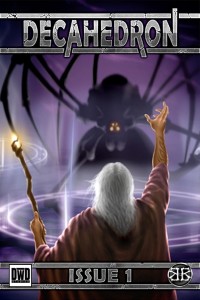 Decahedron is the first issue of its free fanzine from DwD Studios. The inaugural issue supports their recent RPG release BareBones Fantasy, a rules-light fantasy genre roleplaying game. Haven’t heard of BareBones Fantasy yet? Don’t worry, we will be taking a closer look at that system in an upcoming post at The Iron Tavern.
Decahedron is the first issue of its free fanzine from DwD Studios. The inaugural issue supports their recent RPG release BareBones Fantasy, a rules-light fantasy genre roleplaying game. Haven’t heard of BareBones Fantasy yet? Don’t worry, we will be taking a closer look at that system in an upcoming post at The Iron Tavern.
